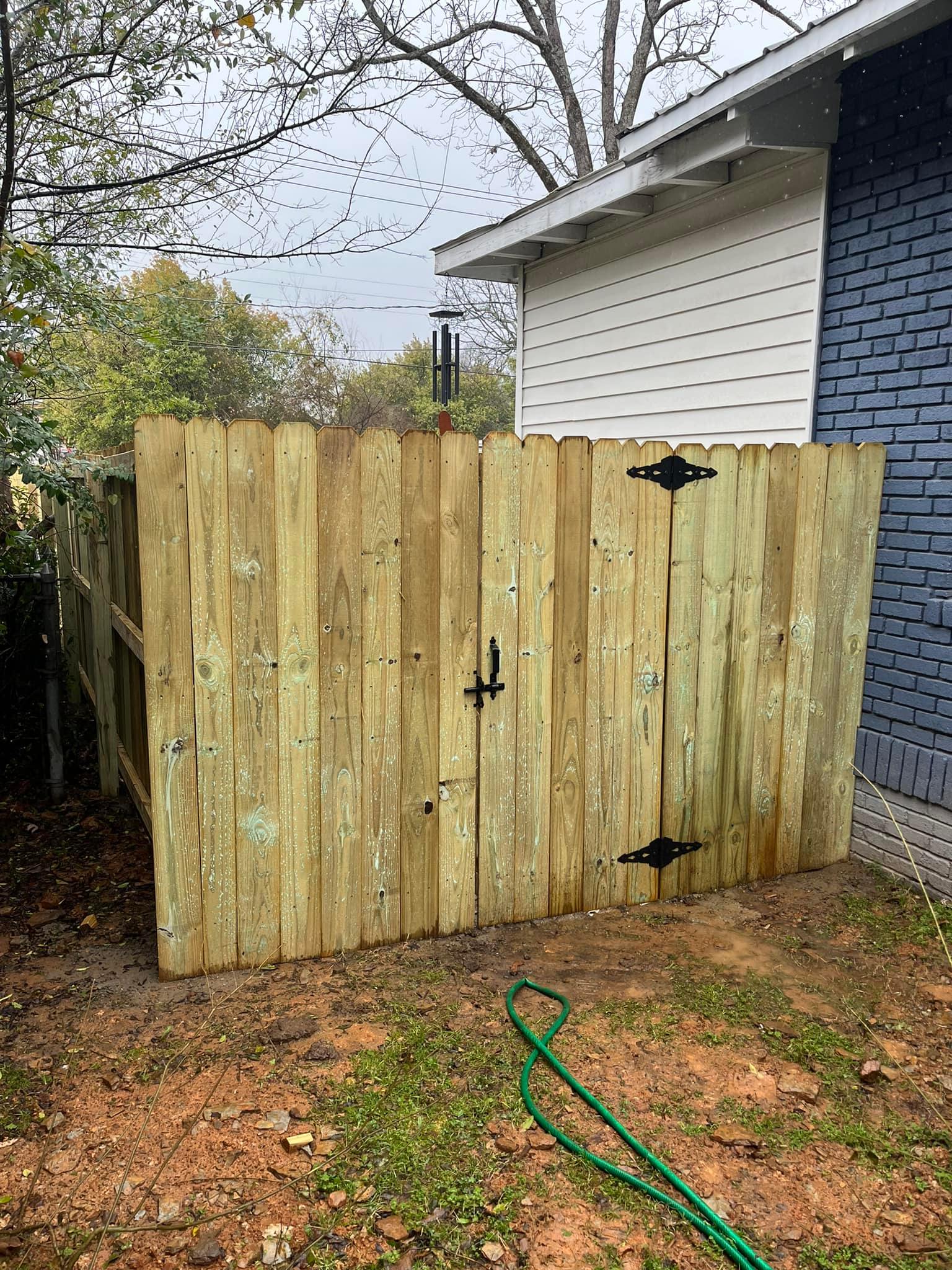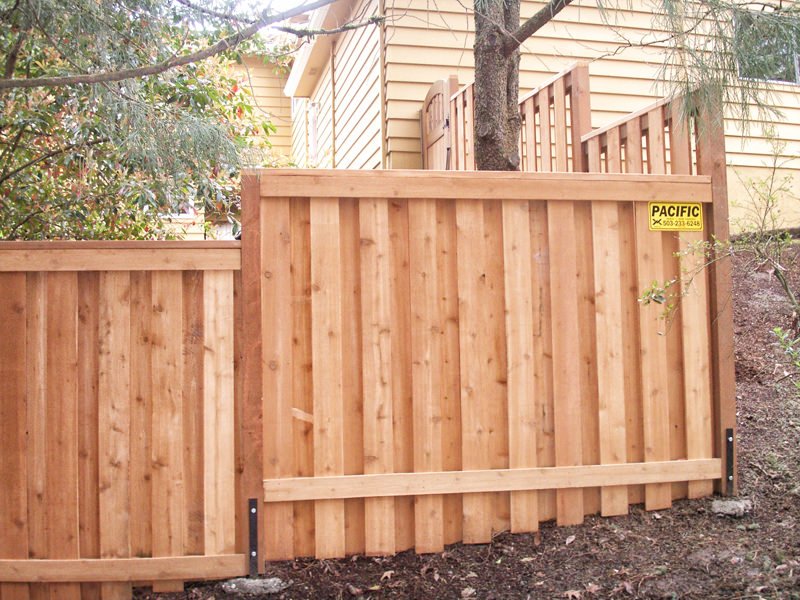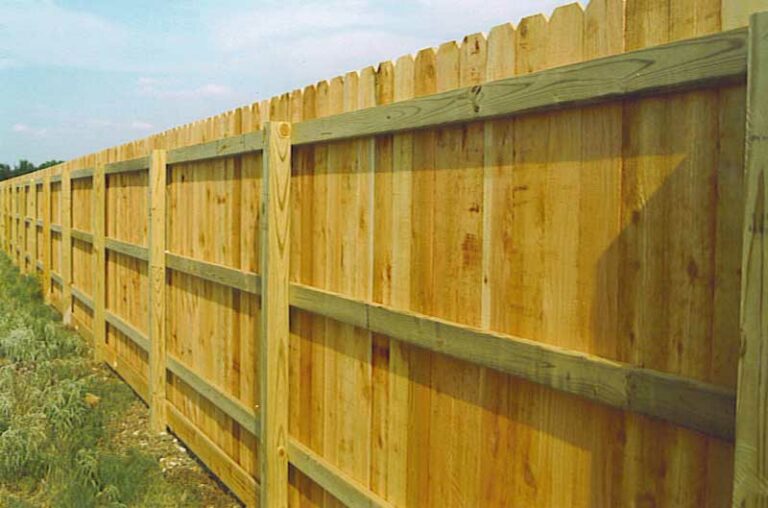Step-by-Step Overview to Installing a Timber Fence for Your Home or Property
Setting up a wood fencing can significantly improve both the capability and aesthetic appeal of your building. Understanding these steps not only ensures a tough setup yet additionally adds to lasting complete satisfaction.
Planning Your Fence Installation
When starting the installation of a wood fencing, mindful preparation is vital to make certain an effective result. Begin by examining the purpose of the fence-- whether it is for privacy, safety, or looks-- considering that this will influence the design and format. Next, evaluate the home lines, taking care to confirm the borders through a survey or title deed to stay clear of conflicts with neighbors.
Consider neighborhood zoning laws and homeowners' organization standards, as these may determine fence elevation, layout, and products. It is recommended to obtain the needed permits prior to beginning job, as this can stop lawful problems later on.
In addition, think about the terrain and dirt problems of your home. Irregular ground may need added adjustments during installment, while rocky dirt may require customized tools.
Last but not least, produce a detailed plan that includes dimensions, the variety of posts, and the spacing between them. A clear format will certainly promote the installation procedure and make sure that you have all needed products available. By sticking to these preparation actions, you can set a solid foundation for a successful wood fencing installation.
Choosing the Right Materials
Selecting the suitable materials for your wood fence is crucial to guaranteeing sturdiness and aesthetic allure. One of the most usual sorts of timber used for fencing include cedar, redwood, and pressure-treated pine. Cedar and redwood are normally resistant to degeneration and pests, making them superb selections for durability. Their abundant colors and natural grain patterns also enhance the visual charm of your building.
Pressure-treated want is another popular choice, as it is frequently more budget-friendly. Nevertheless, it needs regular upkeep and treatment to prolong its life-span. When picking wood, consider the environment of your region; for instance, locations with high humidity might take advantage of wood species with better resistance to moisture.
In addition, you must assess the fencing design and purpose. A picket fencing may need different material specifications compared to a privacy fencing. Go with thicker boards for architectural honesty, particularly in high-wind locations. Take into consideration the coating; unattended wood might call for staining or sealing to protect against climate components. By meticulously selecting your materials, you can make sure that your timber fence will certainly stand the test of time while enhancing your home's landscape.
Preparing the Installment Website

Preparing the setup site is an important action in making sure the successful building of your wood fence. Proper prep work not just assists in a smoother installment process however also adds to the long life and stability of the fence.

Following, evaluate the surface. Eliminate any barriers such as rocks, roots, or particles that could impede the installation process. Take into consideration leveling it or adjusting your fence design appropriately if your website has unequal ground. In addition, check for underground energies by calling your local utility firm. This is vital to prevent damages throughout setup and ensure security.
Installing the Fencing Blog Posts

Next, dig holes for every article, guaranteeing they are deep sufficient-- generally one-third the height of the post above ground-- to provide stability. A depth of at the very least 2 feet is suggested for most fences. The size of the openings must be roughly three times the width of the articles.
Once your openings prepare, place each message upright into the assigned opening. Make use of a level to guarantee they are plumb, changing as essential. After positioning, fill up the openings with concrete mix or packed soil for added assistance. Permit the concrete to cure according to the producer's directions, typically 24 to 48 hours. Correctly installed messages are important for keeping the structural integrity of the fence, ensuring it continues to be protected and upright against environmental stress and anxieties.

Adding Fence Panels and Completing Touches
When the fencing messages are safely set, the following step includes connecting the fence panels, which will certainly specify the borders of your residential property. Begin by placing each panel in between the messages, ensuring they are degree and lined up. Make use of a degree tool to check that the panels are directly; this will certainly make sure a specialist surface. For ideal security, protected each panel to the articles using galvanized screws or nails, which resist rust and rust.
After all panels are connected, check the whole fencing for any kind of voids or imbalances. Make changes as required to make sure an uniform appearance.
Additionally, using a safety sealant or discolor will certainly enhance the wood's toughness versus climate aspects, extending the life of your fence. Choose a shade that matches your home and landscape for a visually pleasing appearance. Lastly, inspect regional regulations for any kind of needed maintenance or updates to guarantee conformity with area requirements. With these steps, your wood fence will certainly wood fences Fort Smith AR not just serve its function efficiently yet additionally boost the total charm of your property.
Verdict
In conclusion, the effective installment of a wood fence requires mindful preparation, option of proper materials, detailed site prep work, and precise implementation of installation methods. Proper maintenance post-installation further extends the life and look of the wood fencing.
When getting started on the installation of a timber fence, mindful preparation is vital to guarantee a successful end result.Selecting the proper materials for your wood fencing is essential to making certain resilience and aesthetic allure. A picket fencing might call for different product requirements compared to a privacy fence.With the setup website correctly prepared, the following action entails setting the fence articles, which serve as the foundation of your timber fence.As soon as the fencing blog posts are safely set, the next action involves attaching the fencing panels, which will certainly define the borders of your residential or commercial property.